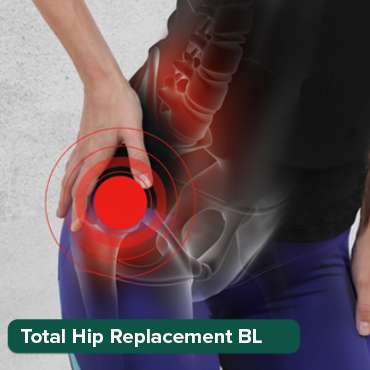
Total Hip Replacement-B/L
Bilateral Total Hip Replacement surgery is a transformative solution for severe hip pain and restricted mobility in both hips. This procedure replaces damaged joints with artificial components, simultaneously enhancing function and comfort. Whether addressing one hip or both, this surgery improves daily life by reducing pain and restoring mobility. Post-operative rehabilitation is essential for achieving lasting results and regaining an active lifestyle.
About The Package
Bilateral Total Hip Replacement surgery is a transformative solution for severe hip pain and restricted mobility in both hips. This procedure replaces damaged joints with artificial components, simultaneously enhancing function and comfort. Whether addressing one hip or both, this surgery improves daily life by reducing pain and restoring mobility. Post-operative rehabilitation is essential for achieving lasting results and regaining an active lifestyle.
Doctor
Testimonials
Inclusions & Exclusions
Inclusions
Room charges (for the specified period)
Consumables, Surgery & Surgeon's fees
O.T. charges
Anesthesia charges
Routine medicines for the number of days as per the package offered. If any extra medicines are
required which are not routinely used then it would be charged as per the actual
Food and Beverages for the patient only as per the diet recommendation.
Exclusions
All expenses for stay beyond the package period
Professional charges of other consultants
Any other additional procedure
Use of special drugs/ consumables
Blood products
CT/MRI or complex lab investigation
Cost of high-value consumables valves/conduits/grafts will be charged extra (unless otherwise
specified) as per applicable rates over and above package cost
About The Treatment
Total Hip Replacement is a surgical procedure in which a damaged hip joint is replaced with a prosthetic implant. This treatment is typically recommended when the hip joint has been severely damaged due to conditions like osteoarthritis, rheumatoid arthritis, avascular necrosis, or traumatic injury. The goal is to relieve pain, improve joint function, and restore mobility.
The procedure involves removing the damaged femoral head and acetabulum (hip socket), and replacing them with artificial components made from metal, ceramic, or plastic. The artificial joint mimics the movement of a natural hip, allowing patients to return to daily activities with reduced or no pain. The surgery can be performed using traditional open techniques or minimally invasive approaches, depending on the patient's condition and the surgeon’s preference.

